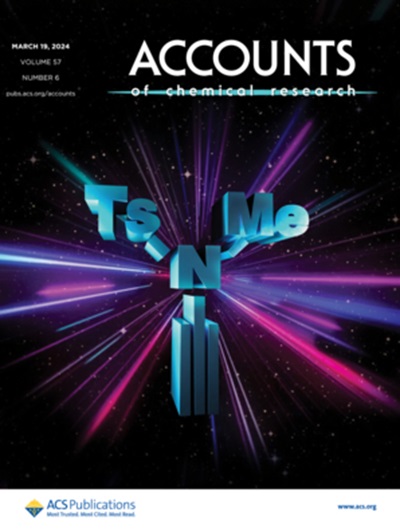如何通过金属氢化物配合物实现氢化/加氢功能化
IF 16.4
1区 化学
Q1 CHEMISTRY, MULTIDISCIPLINARY
引用次数: 0
摘要
金属氢化物(M-H)配合物由于具有显著的反应活性,在精细化工、材料、农用化学品和药品的合成中引起了广泛的关注。具体来说,M-H配合物是催化氢转移反应的活性中间体,导致不饱和有机底物中C = C/C = X (X = O或N)键的有效氢化和加氢功能化,从而形成新的碳氢键、碳碳键和碳杂原子键。本文章由计算机程序翻译,如有差异,请以英文原文为准。

How to Achieve Hydrogenation/Hydrofunctionalization via Metal Hydride Complexes
Metal hydride (M–H) complexes have garnered widespread attention in the synthesis of fine chemicals, materials, agrochemicals, and pharmaceuticals owing to the remarkable reactivity of the M–H bonds. Specifically, M–H complexes are active intermediates that catalyze hydrogen-transfer reactions, leading to efficient hydrogenation and hydrofunctionalization of C═C/C═X (X = O or N) bonds in unsaturated organic substrates for the formation of new carbon–hydrogen, carbon–carbon, and carbon–heteroatom bonds.
求助全文
通过发布文献求助,成功后即可免费获取论文全文。
去求助
来源期刊

Accounts of Chemical Research
化学-化学综合
CiteScore
31.40
自引率
1.10%
发文量
312
审稿时长
2 months
期刊介绍:
Accounts of Chemical Research presents short, concise and critical articles offering easy-to-read overviews of basic research and applications in all areas of chemistry and biochemistry. These short reviews focus on research from the author’s own laboratory and are designed to teach the reader about a research project. In addition, Accounts of Chemical Research publishes commentaries that give an informed opinion on a current research problem. Special Issues online are devoted to a single topic of unusual activity and significance.
Accounts of Chemical Research replaces the traditional article abstract with an article "Conspectus." These entries synopsize the research affording the reader a closer look at the content and significance of an article. Through this provision of a more detailed description of the article contents, the Conspectus enhances the article's discoverability by search engines and the exposure for the research.
 求助内容:
求助内容: 应助结果提醒方式:
应助结果提醒方式:


